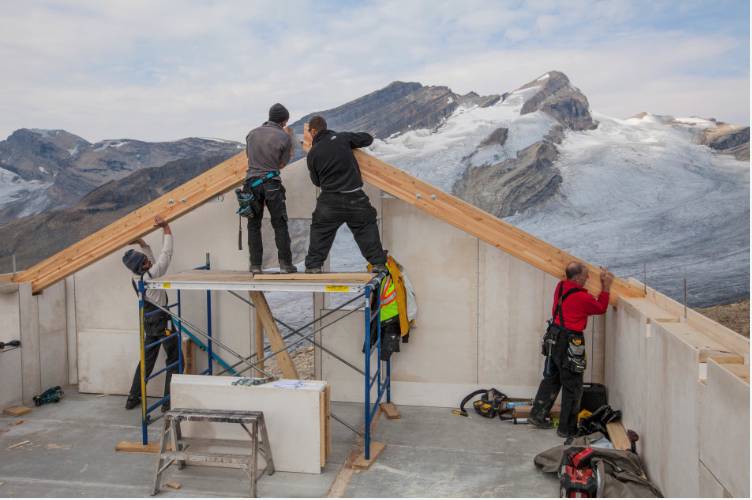- About the ACC
- Membership
- Huts
- Adventures
POLICIES & INSURANCE
- COMMUNITY
- Environment
- Shop
- Give
ACC huts play an increasingly important role in reducing the environmental impact of backcountry travel in wilderness areas and the ACC is an acknowledged leader in the environmentally responsible operation of backcountry facilities. Through ongoing research efforts, the Club seeks ways to further reduce the footprint of backcountry visitors through the use of environmentally-friendly technologies.
ACC huts provide an environmental option for a growing number of people who want to experience the majesty of Canada’s mountain backcountry by offering reliable protection from the elements, communal cooking and sleeping areas and access to water and toilets. Hut users do their own cooking, fetch water from nearby streams or by melting snow, and sleep in their own sleeping bags in common areas. They contribute to keeping the hut clean during and at the end of their stay, and they pack out all trash and food wastes.
Conversely, backcountry camping, whether in developed or undeveloped sites, is land intensive and can lead to degradation of flora and fauna over time. Unless privies are provided, human waste can also pose a significant environmental and health issue. Where privies are provided, removal of human wastes can be difficult. As well, backcountry camping involves ongoing potential for human/wildlife conflicts.
By centralizing and managing these impacts, ACC huts significantly reduce the environmental impact of backcountry travel in a number of ways.
The ACC has collaborated with Parks Canada to develop best practices and environmentally sustainable technology for mountain huts.

The ACC’s huts also allow for the introduction of new, more environmentally-responsible energy and waste management systems, as new technology becomes available. Ongoing research being conducted by the ACC and government land managers is examining other options including remote wind-power and micro-hydro systems, as well as methods for reducing the mass of black water residues that need to be removed by helicopter.
In short, the ACC provides backcountry travelers with environmentally responsible access to the wilderness through commitment to reducing the environmental impact of it’s hut system through the development and use of appropriate backcountry technology and management practices.
In the summer of 2015, the ACC and a number of our partners and volunteers constructed the Guy Hut, incorporating many technologies intended to reduce its carbon footprint and increase the longevity of the facility.
The walls and ceiling of the hut are constructed of structurally insulated panels (SIPs) which provide excellent insulation and reduce interior condensation.
The hut runs on solar, wind and propane. The solar and wind energy is stored in a bank of batteries that power the lighting, fans, and control room. The stoves and heating are propane powered and while there are propane lights, we ask guests to use electrical lighting as much as possible to conserve propane, which has to be flown to the site.
The power for the internal systems and fans is generated onsite by solar and wind systems. Each of the 12 solar panels on the south side of the hut has the capacity to generate 240-260W of power and they even generate electricity in overcast conditions.
The wind turbines are capable of generating 200W of power each and typically shut down during the day as the battery bank is being charged by the solar panels. The hut’s electrical systems can be remotely monitored from the ACC’s office in Canmore.
Input your search keywords and press Enter.